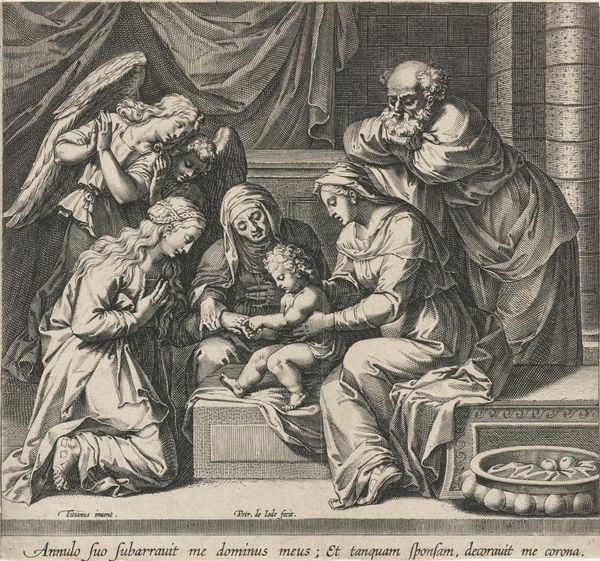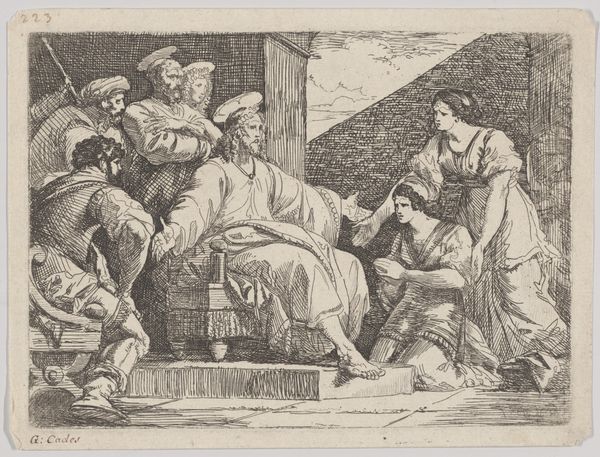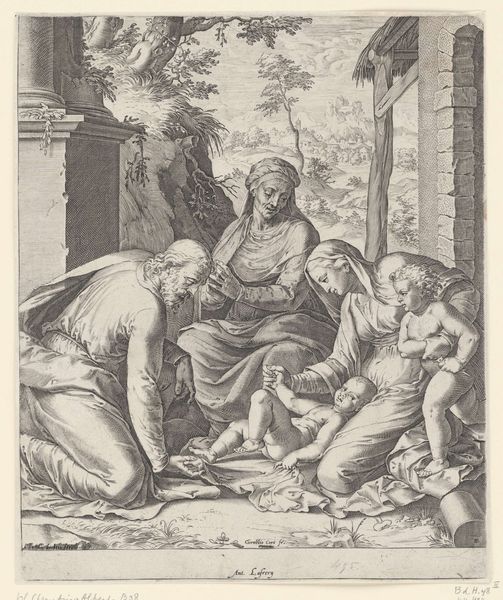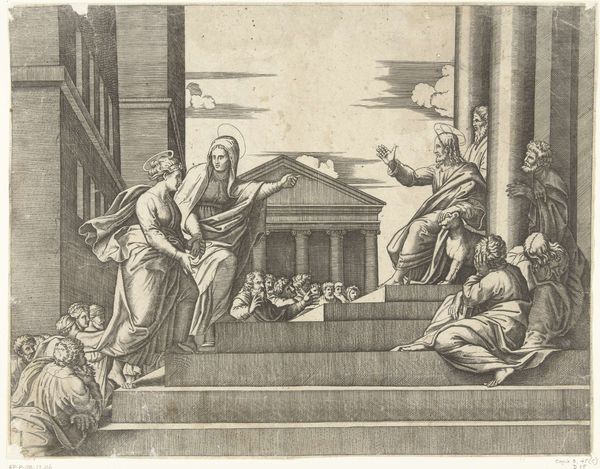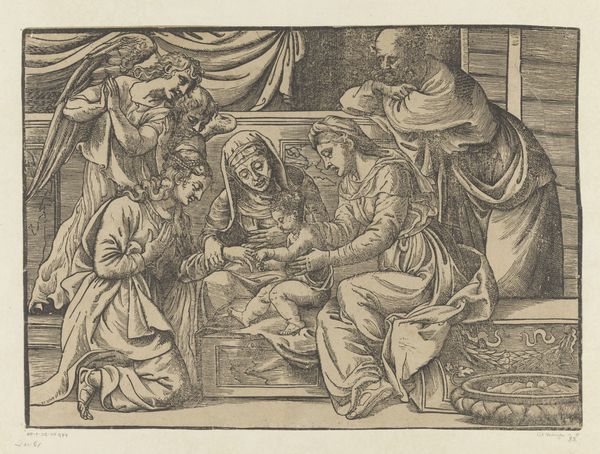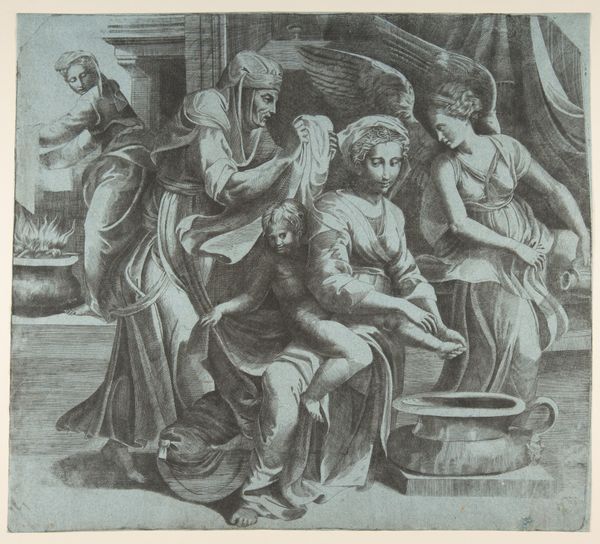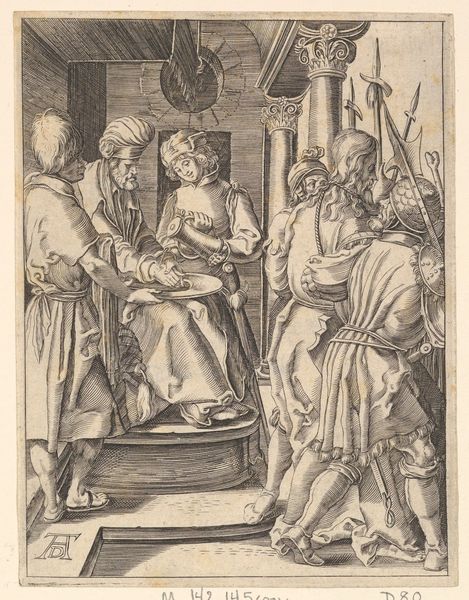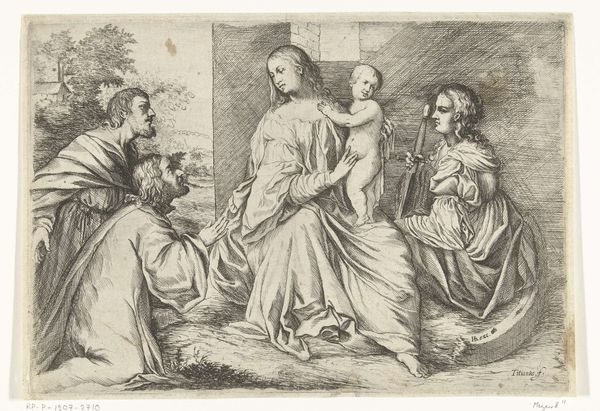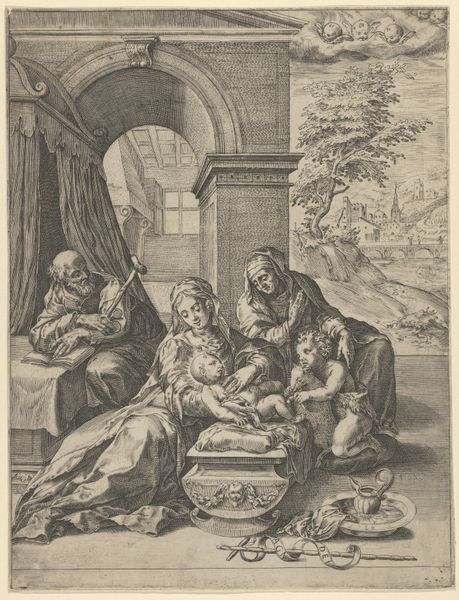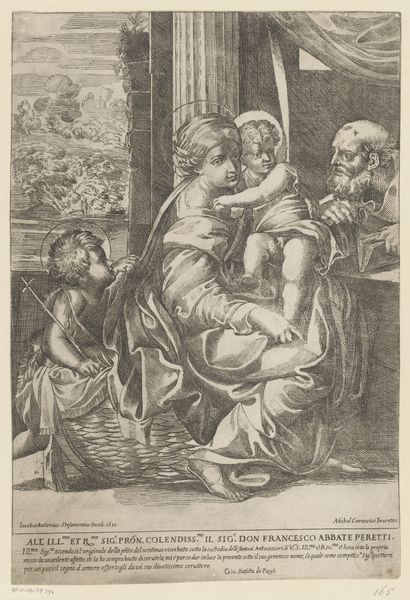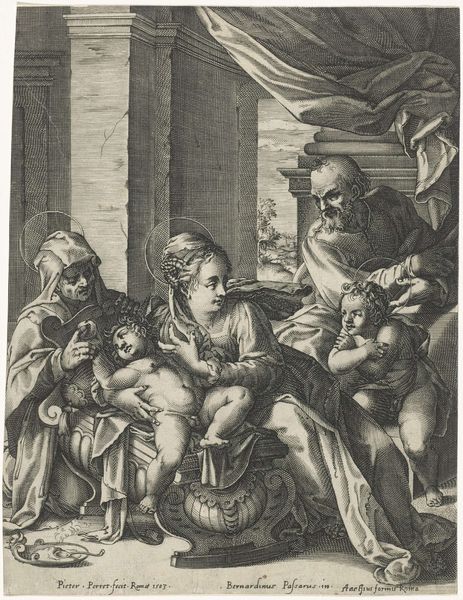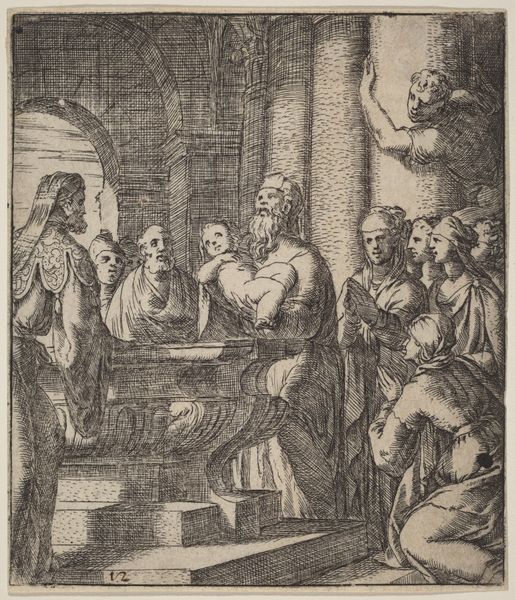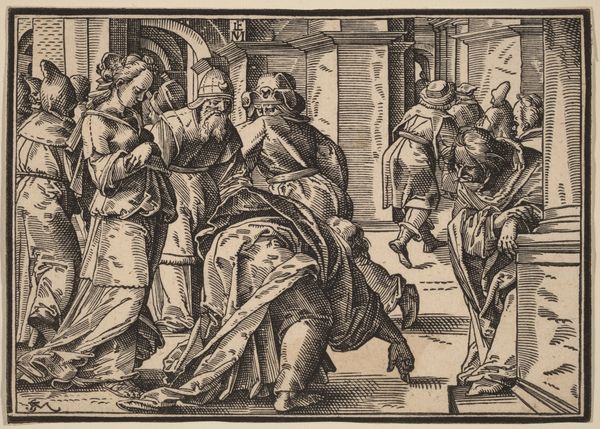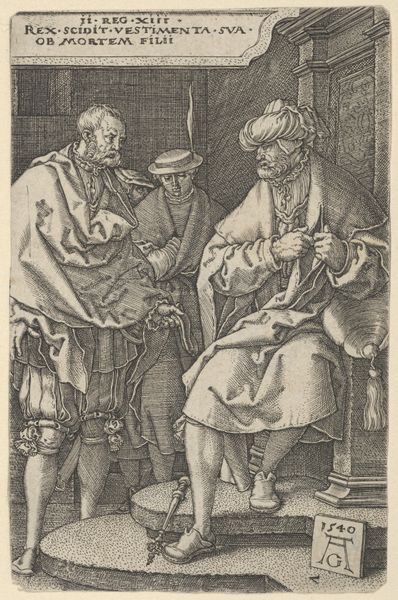
drawing, print, engraving
#
portrait
#
drawing
# print
#
figuration
#
line
#
history-painting
#
northern-renaissance
#
engraving
#
christ
Dimensions: Sheet (Trimmed): 7 11/16 × 9 15/16 in. (19.5 × 25.2 cm)
Copyright: Public Domain
Curator: At first glance, it feels almost chaotic, this tightly packed scene with all these figures vying for my attention. Editor: You're seeing "Christ in the House of Mary," an engraving crafted between 1541 and 1591, attributed to Gerard de Jode. It depicts the biblical scene, you know, where Mary listens to Christ while Martha busies herself with household chores. Curator: Yes, but there’s so much more happening. We see servants bustling in the background near the fire, and is that Martha, looking rather burdened and holding what seems to be a lamb, next to Christ? The composition suggests a household, yet the symbols layered into this place elevate its representation of daily life. Editor: Absolutely. The lamb, clearly symbolic of sacrifice. But notice the placement—Martha offers it, while Mary actively turns toward Christ, engaging directly with the word. It’s not just a narrative scene; it’s an argument about piety and religious duty, told through the roles the women perform, especially given the context of reformation religious debates during its making. Curator: And the figures themselves; they're almost statuesque, with that Northern Renaissance influence lending them weight. Even Christ’s halo is reduced to a minimalist disc behind his head, almost downplaying his divine presence while emphasizing his physical form, sitting to advise. Editor: Exactly. He's rendered approachable, human even. This isn't some detached deity; he is seated to engage, his hand gestures an invitation. But consider Mary’s submissive position. Is she listening, or is the image imposing this posture on her? How do we read the symbolism today, versus when it was made? Curator: That’s where it gets fascinating, doesn't it? We can appreciate de Jode’s craft, the precision of line, and composition in its moment but grapple with the image’s implications for women and labour now. There are hierarchies visually presented to make a certain ideological point, especially as seen from our social distance. Editor: A powerful piece for its historical and social commentary then, sparking reflections that extend across the centuries. It demonstrates how artists and patrons participated in public discussions during their time. Curator: Yes, and a sharp reminder that while images might tell stories, they're never neutral, bearing a rich legacy, demanding critical dialogue across time.
Comments
No comments
Be the first to comment and join the conversation on the ultimate creative platform.
